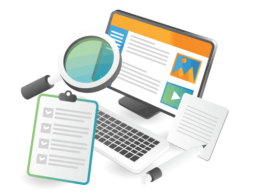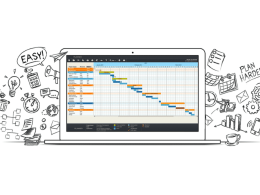Embracing the unpredictable nature of projects, agile methodologies have gained popularity for their flexibility and adaptability. However, navigating uncertainties requires effective risk management.
In this article, we will delve into the world of agile risk management, exploring strategies to identify, assess, and mitigate risks in projects. Whether you’re a project manager, team member, or simply curious about agile practices, this guide will provide valuable insights to enhance your project’s success.
Understanding Agile Risks
In the dynamic realm of agile projects, risks can manifest in various forms. Understanding these risks and their potential impact is crucial to mitigating their effects and ensuring project success.
Types of Risks in Agile Projects:
Agile projects are susceptible to different types of risks that can arise at any stage of the project. By recognizing and categorizing these risks, project teams can proactively address them. Here are the key types of risks commonly encountered in agile projects:
1. Technical Risks:
In agile projects, technical risks encompass challenges related to the project’s technological aspects. These risks may include:
- Uncertainty in implementing new technologies or frameworks
- Compatibility issues between software components
- Complexity in integrating third-party systems
- Lack of expertise or skills required for specific technical tasks
- Potential delays caused by unexpected technical hurdles
2. Organizational Risks:
Agile projects often operate within organizational contexts that may introduce additional risks. These risks can stem from factors such as:
- Limited availability of resources, including human resources, equipment, or infrastructure
- Changing priorities or conflicting demands from different stakeholders
- Inadequate support or understanding of agile principles and practices within the organization
- Lack of alignment between the project goals and organizational objectives
- Ineffective collaboration and communication between teams or departments
3. Stakeholder-related Risks:
Agile projects thrive on close collaboration and feedback from stakeholders. However, stakeholder-related risks can emerge due to various reasons, such as:
- Miscommunication or unclear expectations from stakeholders
- Frequent changes in project requirements or scope
- Conflicting interests or priorities among stakeholders
- Insufficient involvement or commitment from key stakeholders
- Inadequate understanding of the user’s needs and preferences
Strategies for Identifying Risks in Agile Projects
Identifying risks early on allows for proactive measures to minimize their impact. Agile projects benefit from various strategies and techniques to effectively identify risks. By employing these strategies, project teams can foster a culture of risk awareness and ensure the success of their endeavours.
Agile Risk Identification Techniques:
1. Brainstorming Sessions:
Agile projects thrive on collaboration and collective intelligence. Brainstorming sessions provide an opportunity for team members and stakeholders to come together and identify potential risks. Encourage open and creative discussions, allowing participants to share their perspectives, experiences, and concerns. By leveraging the collective knowledge and insights of the team, valuable risks can be identified that may have otherwise gone unnoticed.
2. User Story Mapping:
User story mapping is a technique commonly used in agile projects to visualize the flow and sequence of user stories. During the process of mapping user stories, project teams can also identify associated risks. By examining each user story and its dependencies, the team can uncover potential risks that may impact the successful delivery of specific features or functionalities. This approach helps in considering risks holistically within the context of the project’s requirements and user expectations.
3. Retrospectives and Lessons Learned:
Retrospectives are essential ceremonies in agile projects for reflecting on the completed iterations or sprints. They provide an opportunity to gather feedback and identify areas for improvement. Retrospectives also serve as a valuable platform for identifying risks encountered during the project’s execution. By engaging the entire team in a retrospective discussion, individuals can share their insights and experiences, highlighting risks they encountered or anticipate in future iterations. This iterative approach ensures that risks are continually identified and addressed throughout the project’s lifecycle.
Involving Stakeholders in Risk Identification:
Effective risk management involves engaging project stakeholders in the identification process. Stakeholders bring diverse perspectives and domain knowledge that can contribute to comprehensive risk identification. Consider the following strategies to involve stakeholders in risk identification:
1. Stakeholder Workshops:
Conduct workshops specifically designed to engage stakeholders in risk identification activities. These workshops can include activities such as group discussions, facilitated exercises, or scenario-based simulations. By involving stakeholders, their concerns, expectations, and potential risks can be captured, ensuring a comprehensive risk identification process.
2. Regular Communication Channels:
Establish regular channels of communication with stakeholders, such as meetings, updates, or feedback sessions. Actively seek their input and encourage them to share any potential risks they foresee. Foster an open and transparent environment where stakeholders feel comfortable expressing their concerns and raising potential risks. This ongoing dialogue enhances risk identification and ensures that emerging risks are promptly addressed.
Utilizing Risk Checklists and Templates:
Risk checklists and templates provide structured frameworks that help project teams systematically identify risks. These resources can serve as valuable references to ensure that no significant risks are overlooked. Consider using the following approaches:
1. Industry-Specific Risk Checklists:
Explore industry-specific risk checklists that are relevant to the nature of the project or the domain in which it operates. These checklists often provide a comprehensive list of risks commonly associated with specific industries or project types. By reviewing and adapting these checklists, project teams can identify risks that are specific to their context.
2. Agile Risk Management Templates:
Develop or leverage agile-specific risk templates that are tailored to the agile project management approach. Agile risk management templates can guide the team in identifying risks within the context of agile principles and practices. They may include prompts related to iterative planning, frequent collaboration, or evolving requirements. Customizing risk templates ensures that risks unique to the agile environment are appropriately captured.
Mitigating Risks in Agile Projects
Mitigating risks is a crucial aspect of agile project management. By formulating appropriate risk response strategies, project teams can minimize the potential impact of risks and increase the chances of project success. Agile methodologies inherently promote adaptability and collaboration, providing a strong foundation for effective risk mitigation.
- Avoidance: Identifying risks that can be completely eliminated and taking preventive actions.
- Transfer: Shifting the responsibility of risks to external parties, such as insurance or third-party vendors.
- Mitigation: Implementing proactive measures to reduce the impact or likelihood of identified risks.
- Acceptance: Acknowledging certain risks as unavoidable and preparing contingency plans to minimize their impact.
Agile Techniques for Risk Mitigation:
Agile methodologies offer a range of techniques that naturally align with risk mitigation efforts. These techniques emphasize adaptability, collaboration, and continuous improvement. By leveraging agile practices, project teams can effectively address and mitigate risks throughout the project’s lifecycle. Consider the following agile techniques for risk mitigation:
- Frequent Communication and Collaboration: Agile projects emphasize open and transparent communication among team members, stakeholders, and customers. Regular communication helps identify risks early and fosters a shared understanding of potential challenges. By encouraging collaboration and knowledge sharing, team members can collectively brainstorm risk mitigation strategies and proactively address emerging risks.
- Iterative Planning and Adaptive Decision-making: Agile projects employ iterative planning, with frequent reviews and adjustments to the project’s direction. This approach allows the team to adapt to changing circumstances and address risks in a timely manner. By continuously reassessing risks and incorporating risk mitigation efforts into each iteration, the team can respond effectively to evolving project dynamics.
- Agile Testing and Quality Assurance Practices: Testing and quality assurance practices in agile projects contribute to risk mitigation by identifying and addressing issues early in the development process. By adopting techniques such as test-driven development, continuous integration, and automated testing, project teams can uncover potential risks related to functionality, performance, or security. Addressing these risks through rigorous testing helps ensure that the final product meets quality standards and reduces the likelihood of future issues.
- Incremental Delivery and Feedback Loops: Agile projects follow an incremental delivery approach, enabling early and frequent feedback from stakeholders and end-users. This feedback loop is invaluable for risk mitigation, as it allows the team to detect and address potential risks or user concerns promptly. By integrating feedback into the development process and responding to it iteratively, project teams can mitigate risks associated with user satisfaction, usability, and requirements alignment.
- Retrospectives and Continuous Improvement: Retrospectives provide an opportunity for the team to reflect on completed iterations and identify areas for improvement. By conducting regular retrospectives, project teams can assess the effectiveness of risk mitigation strategies implemented during previous iterations. Lessons learned from retrospectives can inform future risk mitigation efforts, enabling the team to continuously refine their approach and enhance risk management practices.
Conclusion
Agile risk management is essential for project success. By identifying, assessing, and mitigating risks, teams can navigate uncertainties and seize opportunities. Strategies include techniques like brainstorming, user story mapping, and retrospectives. Agile practices like frequent communication, iterative planning, and continuous improvement aid in risk mitigation. Integrating risk management into agile ceremonies creates a proactive environment. By prioritizing risk management, teams increase their chances of delivering value and meeting stakeholder expectations. Embrace agile risk management to drive successful project outcomes.
















